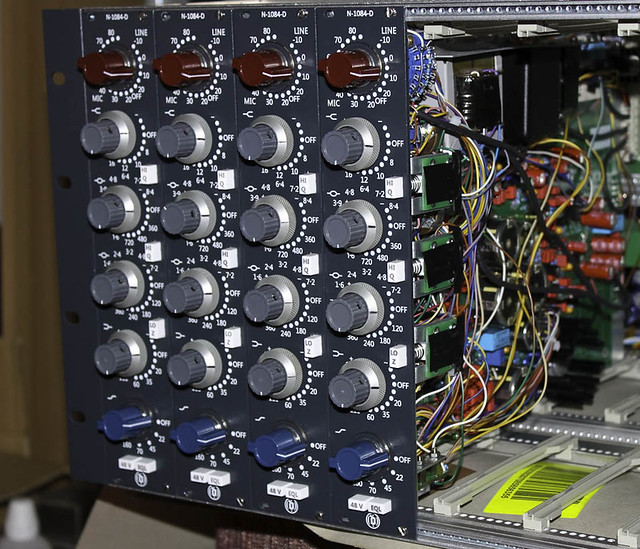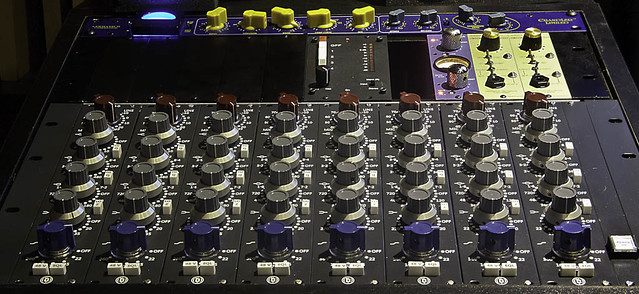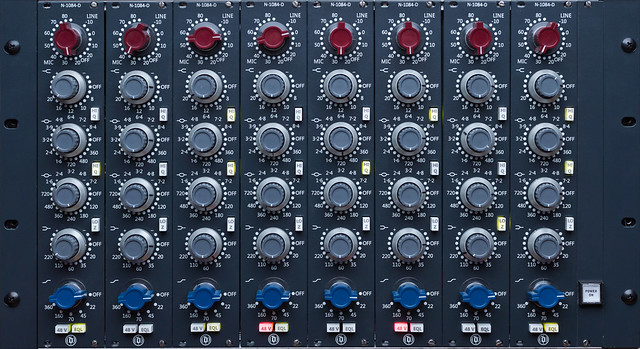Thank you, forum, for your patience and answers in my times of need.
When I started DIY, what I was really after was some Neve EQs and preamps - something nice to record my drums and have fun with at mix time. Prices for used or new ones being what they are, I wanted to make some myself, but quickly realized that this wasn't a project for beginners... so the idea was stashed away, still stuck at the back of my head.
After a few years, when bruno2000 presented his 1084 dual mid PCBs, I knew I found what I was looking for. So after some back and forth, complications, sweat, blood and above all, work, here is a sneek peek:

She will be completed tomorrow, the four missing channels are in varying state of completeness, but they all still lack the gain swtich assembly and fitted knobs, thus they are not installed.
Sitting behind the channels is a digitally controlled (but still analog) MDAC mixer (ala Duality) that feeds a pair of full BA283. All 31267 transformers are BBC-era originals. The rest of the iron is courtesy of Oliver at AMI (thanks!). Remote control via OSC / MCU. Most possibly the only class A neve console to have an ethernet jack and its very own IP address 8)
When I started DIY, what I was really after was some Neve EQs and preamps - something nice to record my drums and have fun with at mix time. Prices for used or new ones being what they are, I wanted to make some myself, but quickly realized that this wasn't a project for beginners... so the idea was stashed away, still stuck at the back of my head.
After a few years, when bruno2000 presented his 1084 dual mid PCBs, I knew I found what I was looking for. So after some back and forth, complications, sweat, blood and above all, work, here is a sneek peek:

She will be completed tomorrow, the four missing channels are in varying state of completeness, but they all still lack the gain swtich assembly and fitted knobs, thus they are not installed.
Sitting behind the channels is a digitally controlled (but still analog) MDAC mixer (ala Duality) that feeds a pair of full BA283. All 31267 transformers are BBC-era originals. The rest of the iron is courtesy of Oliver at AMI (thanks!). Remote control via OSC / MCU. Most possibly the only class A neve console to have an ethernet jack and its very own IP address 8)




